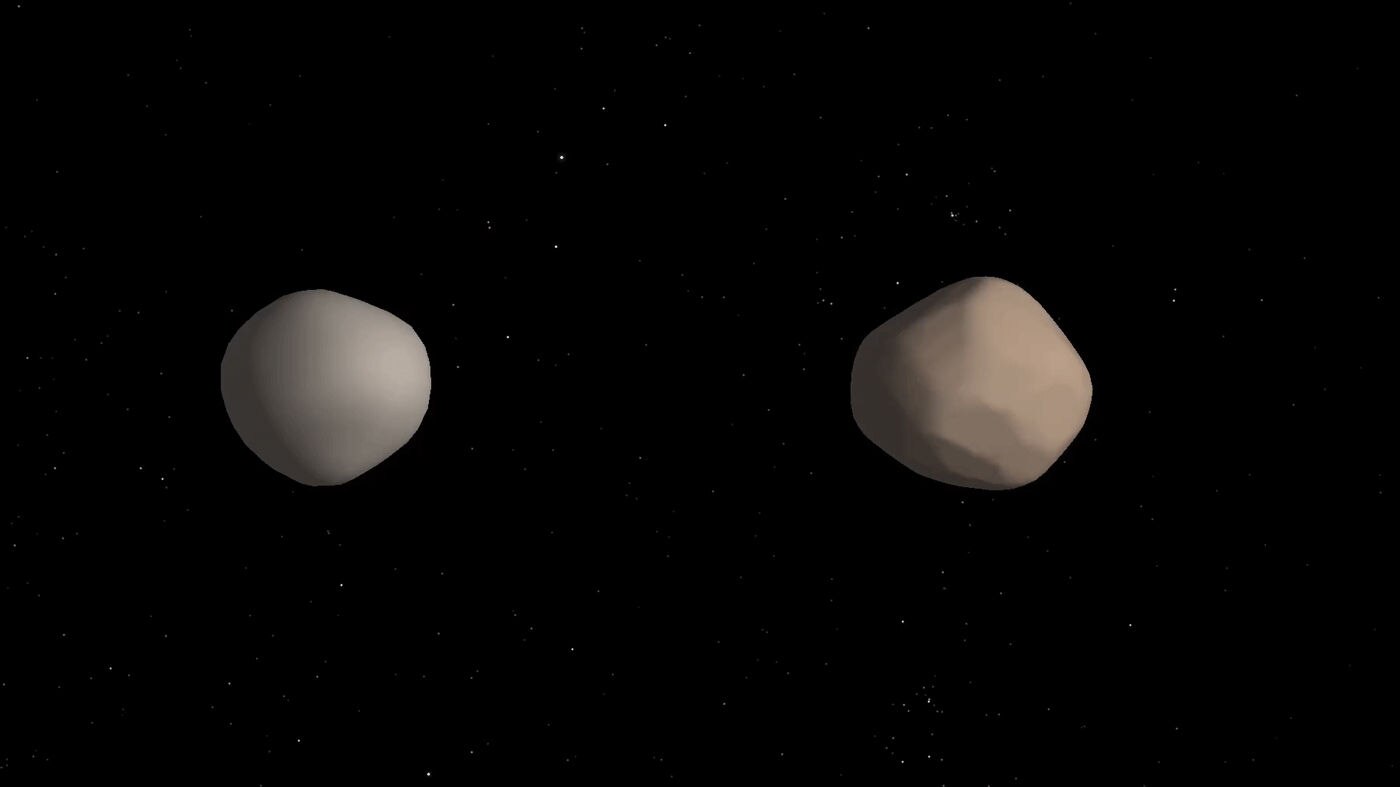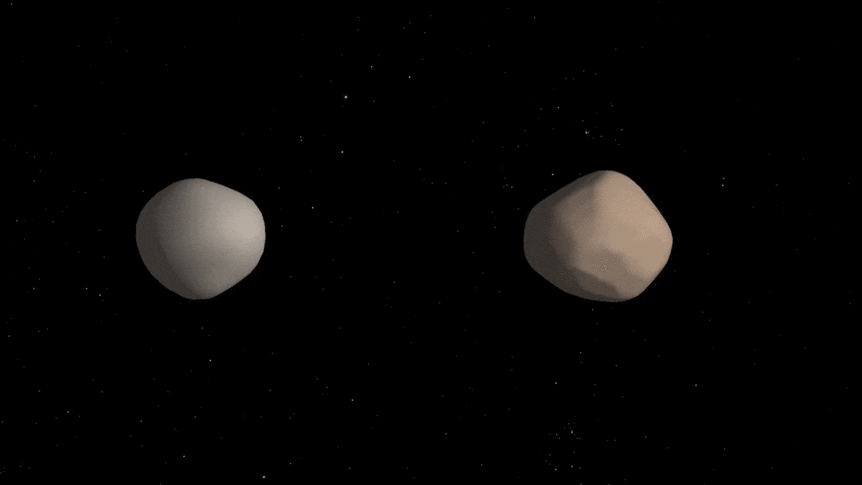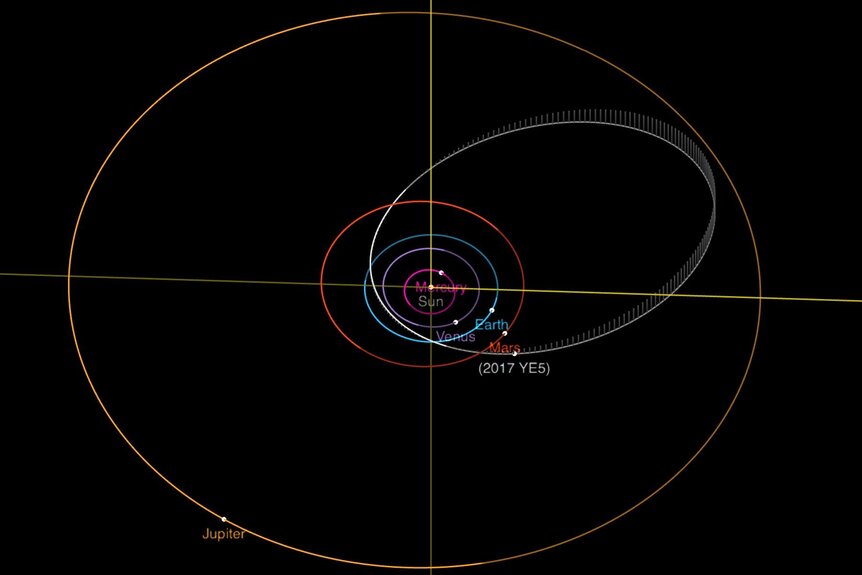Create a free profile to get unlimited access to exclusive videos, sweepstakes, and more!
2017 YE5: A rare binary asteroid caught on radar

Astronomers have discovered a rather remarkable space rock: the asteroid 2017 YE5. It’s a Near-Earth Asteroid (or NEA, meaning its orbit brings it relatively close to Earth on occasion), which is interesting… but we know of lots of those. Thousands.
What makes this asteroid special is that it’s not an asteroid. It’s two asteroids, a binary asteroid, two objects orbiting each other. Even that isn’t all that peculiar, to be honest. Many asteroids in the main belt between Mars and Jupiter have moons, some more than one, and something like 15% of NEA have moons, too.
But YE5 still has a trick up its sleeve: Both objects are roughly the same size, and that’s rare indeed. In general, you get one big rock with a much littler one orbiting it, but in the case of YE5 both are very roughly the same size, about 900 meters across. Only three other NEAs with roughly equal (say, a ratio smaller than 3 to 1) are known: (66391) 1999 KW4, 69230 Hermes, and 1996 FG3.
This story gets better. It was discovered late in 2017 by French astronomer Claudine Rinner, and its orbit takes it from just outside that of Venus almost all the way out to Jupiter. It crosses Earth’s orbit in such a way that it can get pretty close to us, and by coincidence the closest approach for decades in the past and future was found to be in June 2018, just months after discovery!
On June 21, 2018, it passed just under 6 million kilometers from Earth, a little less than 16 times the distance to the Moon. That’s a fine, safe distance, but also close enough to actively observe it using radar. That’s really important! Even with big optical telescopes, near-Earth asteroids only appear as points of light. But pinging them with radar can produce much higher resolution data, allowing astronomers to determine their shapes.
So the Green Bank, Goldstone, and Arecibo facilities were aimed at the rock, and that’s when astronomers got their surprise: YE5 is an equal-mass binary!
That animation shows the two objects and their motion. This is called a bi-static Doppler image, and it’s a tad more complicated than a visible-light image. Emily Lakdawalla at The Planetary Society has an excellent précis on how that works.
The two objects, both about 900 meters across (the same size as Ryugu, currently being visited by the Japanese spacecraft Hayabusa 2), take about 20 to 24 hours to orbit each other.
It still gets weirder. As with many asteroids, they’re very dark, reflecting light about as well as a charcoal briquette. But oddly, one of the two objects is much darker than the other in the radar observations. That may be due to different surface roughness, or different compositions.
It’s hard to come up with a good reason for that. It’s not clear how binary asteroids form. In the case where one is much larger than the other, a collision can do the trick, knocking off a chunk or chunks.
When the two are closer in size, it’s possible they started off as one object, but then split into two. This can happen due to a process called the YORP effect, where sunlight warms the asteroid in such a way that its spin increases. If it spins fast enough, and isn’t really a solid body but more like a rubble pile (a collection of boulders held together by their own gravity), the centripetal acceleration can cause it to split. Another way is for two objects to have a grazing collision, which can end up with them orbiting one another.
Either way, one component being a very different composition or texture is weird. After a collision there’d probably be some mixing, and if they came from the same object, they should be similar too. Clearly, this object is telling us something pretty interesting.
The problem is we can’t listen to what it’s saying for a while. It orbits the Sun every 4.75 years or so, but it won’t be close to the Earth again for 20 years, and that’s not nearly as good a pass as this one was. It’ll be many decades before we see it this closely again… unless we send a probe there.
That would (pardon the expression) rock. The European Space Agency is considering a mission called Hera that would rendezvous with the asteroid Didymos, a 780-meter rock orbited by a 180-meter moon. That’s not quite what I would call a binary, though it’s a fascinating target. But even then, will it give us the same insights YE5 would? I wonder.
Someday we’ll have the wherewithal to just go out and visit every interesting rock that comes our way. Until then, we’ll just have to wait from them to come to us so we can take a closer look.





























